In the dynamic e-commerce, where brands continually seek inventive ways to connect with potential customers and sustain their interests, gamification emerges as a highly entertaining strategy worth exploring.
E-commerce gamification, though often overlooked, serves as a captivating solution to address some of the prevalent and challenging marketing issues. The success of implementing gamification depends on the approach taken and the tools utilized for this purpose.
To aid your initiation into gamification within your online store, I’ve gathered essential tips and presented real-world examples from industry leaders, offering inspiration for your venture.
Understanding E-commerce Gamification:

E-commerce gamification involves incorporating game concepts and elements into your marketing strategy to captivate users and positively influence their behavior.
The art of transforming shopping experiences into a game revolves around leveraging key components such as rewards and competitions to stimulate repetitive behavior driven by the dopamine response.
Over time, by implementing this method and strategically selecting resources, you can mitigate cart abandonment, retain visitors who may have otherwise disengaged, and potentially convert them into dedicated and loyal customers.
Drawing parallels with the didactic method that often uses playful elements to enhance learning, the concept of sugarcoating educational processes through games has been widely embraced. E-commerce brands have recognized the potential of engaging users through a playful approach, prompting them to ponder why not harness this technique to their advantage!
Benefits of Ecommerce Gamification:

- Increased Customer Engagement: Gamification makes the shopping experience more interactive and enjoyable. By incorporating game elements such as challenges, rewards, and competitions, customers are likelier to stay engaged with your e-commerce platform.
- Enhanced User Experience: Gamification elements, such as quizzes, spin-to-win, and interactive features, contribute to a more enjoyable and memorable user experience. This positive interaction can lead to customers spending more time on your website.
- Customer Loyalty and Retention: Loyalty programs, rewards, and badges create a sense of accomplishment and exclusivity for customers. This, in turn, fosters loyalty and encourages repeat business as users strive to achieve more rewards and recognition.
- Boosted Sales and Conversions: Gamification’s interactive and entertaining nature can lead to increased sales and conversions. Features like limited-time offers, discounts, and gamified promotions can incentivize customers to purchase.
- Data Collection and Personalization: Gamification often involves users providing information or participating in activities, allowing businesses to collect valuable data. This data can personalize marketing strategies, offers, and product recommendations based on individual preferences.
- Community Building: Multiplayer games, challenges, and community-focused gamification elements can help build a sense of community among your customers. This sense of belonging can contribute to increased brand advocacy and word-of-mouth referrals.
- Brand Differentiation: Implementing gamification sets your e-commerce platform apart from competitors. It adds a unique and entertaining layer to your brand, making it more memorable and distinctive in the minds of consumers.
- Encourages Desired User Behavior: Gamification allows businesses to guide users toward specific actions, such as completing a purchase, referring friends, or interacting with certain products. This can help align user behavior with business goals.
- Social Sharing and Virality: Gamification features involving social sharing, challenges, or competitions can increase social media visibility. Users are likelier to share their achievements or experiences, creating a viral effect and reaching a broader audience.
- Adaptability and Innovation: The dynamic nature of gamification allows for continuous adaptation and innovation. Businesses can experiment with new gamification strategies, keeping the user experience fresh and exciting over time.
Top Companies that Implement Ecommerce Gamification:
1. Duolingo
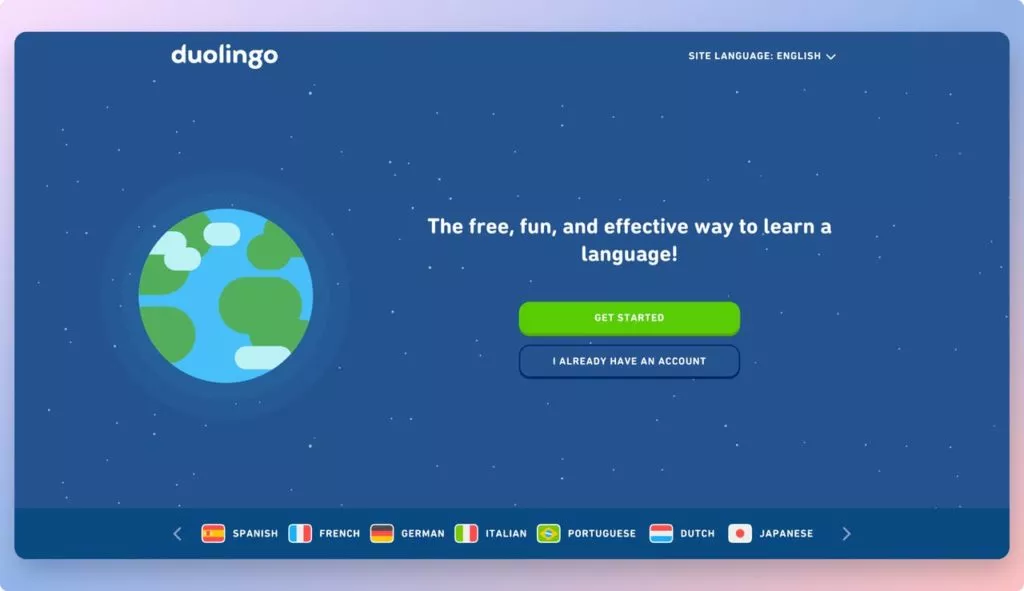
Duolingo stands as the pinnacle of educational gamification, revolutionizing language learning with its engaging approach. From competitions to community building, badges, certificates, wagers, and coins, the entire Duolingo platform is intricately gamified.
The brand has implemented a comprehensive four-point gamification strategy within its application, transforming the process of learning foreign languages into an enjoyable and engaging experience. Duolingo encourages users to set small, specific daily goals, breaking down the language-learning task into manageable steps. Daily engagement is rewarded, creating a cycle that fosters consistent learning habits.
External triggers are strategically employed to entice users back into the learning process. These include progress bars that allow users to compare their achievements with others or their own expectations, adding a competitive and communal aspect to the language-learning journey.
2. Lacoste
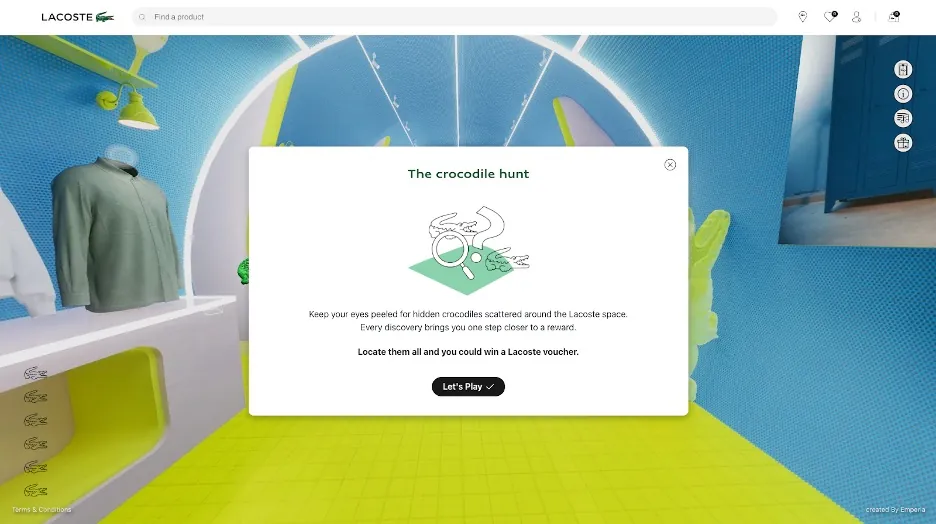
Lacoste’s foray into the metaverse is an innovative and bold move in gamified shopping experiences. The virtual store becomes a canvas for the brand’s creativity, showcasing its fashion prowess. Incorporating scavenger hunt elements adds a layer of interactivity as users unlock vouchers and discounts. The utilization of the metaverse for presenting seasonal collections, as witnessed in the summer collection showcase in 2023, reflects a commitment to creating a community and fostering shopper loyalty through a distinctive retail experience. Lacoste’s approach underscores how gamification can elevate a brand’s image and engagement strategy.
3. Build-A-Bear
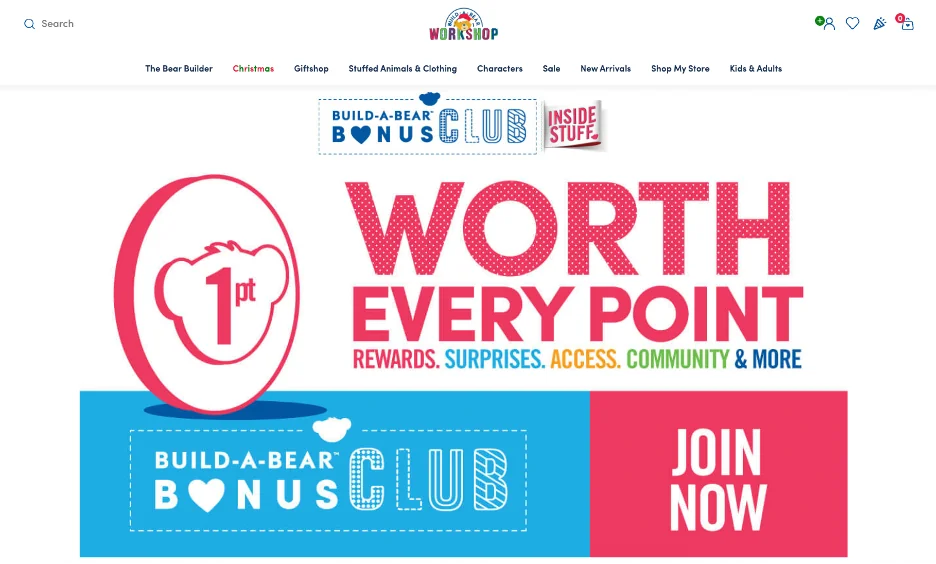
Build-A-Bear’s Bonus Club demonstrates a sophisticated gamified loyalty program that goes beyond mere points. Earning points for every pound spent is standard practice, but the club’s exclusivity comes to the fore by providing early access to new releases and deals. Shifting birthdays into a gamified experience through the ‘Count Your Candles’ scheme adds a delightful twist. By ‘paying your age’ to acquire the Birthday Treat Bear, members receive a particular product and engage in a playful and memorable experience, further solidifying their connection with the brand.
4. Elaina Gisele Collection
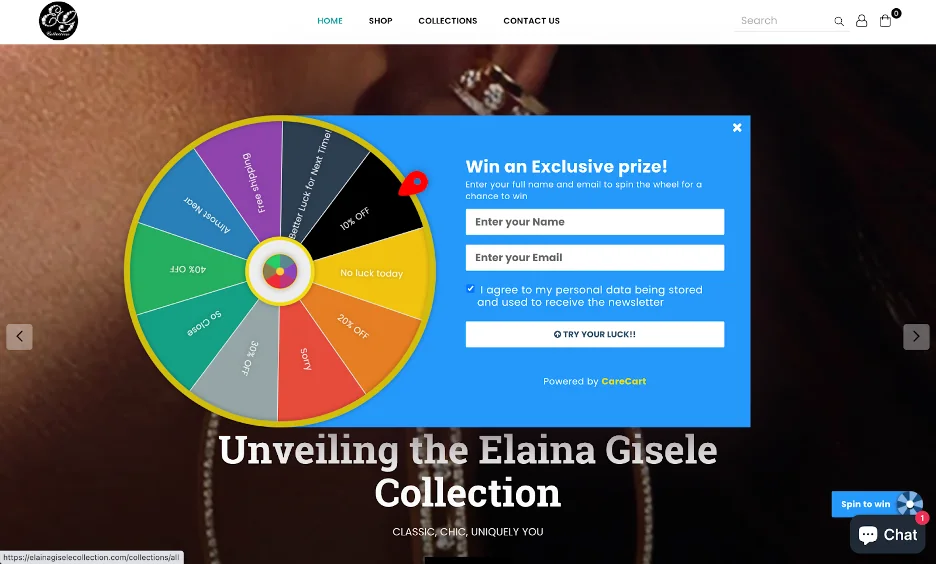
Elaina Gisele Collection, a jewelry retailer in the U.S., takes a playful approach with its ‘spin-to-win’ pop-up strategy. The website welcomes users with an interactive game where entering their name and email address allows them to spin and win discounts and prizes. This gamified entry point not only adds an element of excitement to the shopping experience but also incentivizes users to participate and explore the offerings actively. It creates a dynamic and engaging first interaction, setting the tone for a vibrant customer journey.
Learn how AI has transformed ecommerce here.
5. JD Sports (King of the Game)
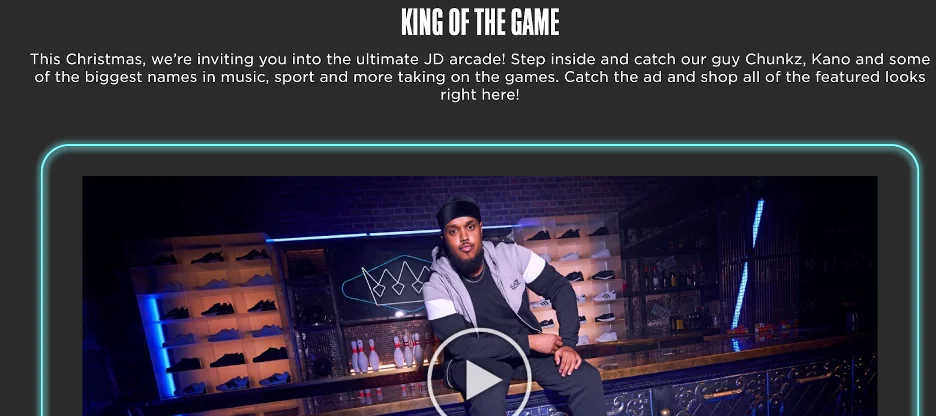
JD Sports’ collaboration with Snapchat to transform its flagship London store into the ultimate JD arcade showcases a dynamic approach to in-store gamification. Using augmented reality (AR) through Snapchat’s technology adds an immersive layer. The claw grabber game, accessible by scanning a code on the storefront, brings fun and excitement to the physical shopping space. Teasing the concept through a television advert featuring celebrities and later rolling it out nationwide amplifies the reach and impact of the gamified experience, turning ordinary shopping into an adventure.
6. Charlotte Tilbury
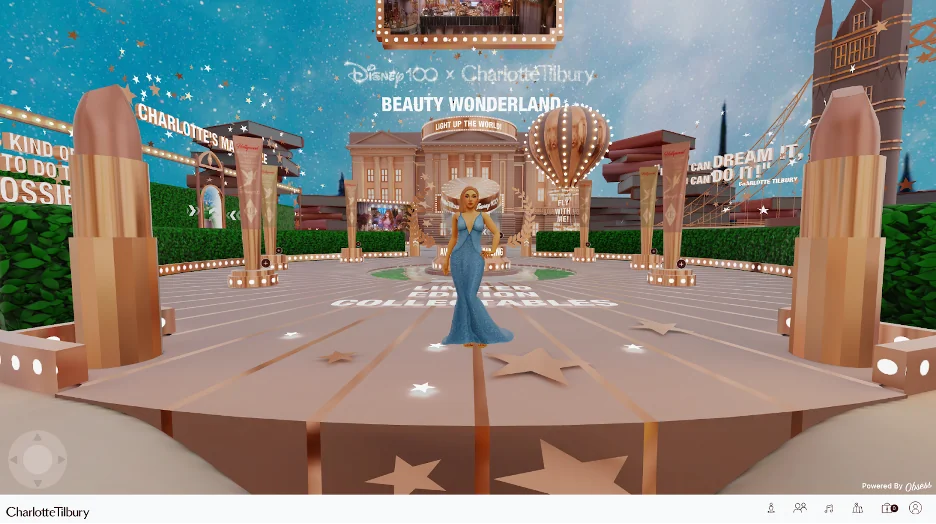
Charlotte Tilbury’s venture into the metaverse aligns with the brand’s commitment to a multi-dimensional shopping experience. The Virtual Disney 100 x Charlotte Tilbury Beauty Wonderland is about showcasing products and creating a world where users can interact. The ability to create 3D branded avatars and engage in a garden racing game adds layers of immersion and enjoyment. By intertwining physical, augmented, and virtual elements, Charlotte Tilbury demonstrates how gamification can transcend traditional boundaries, creating a brand universe in which customers actively participate.
7. Track Brewing Co.
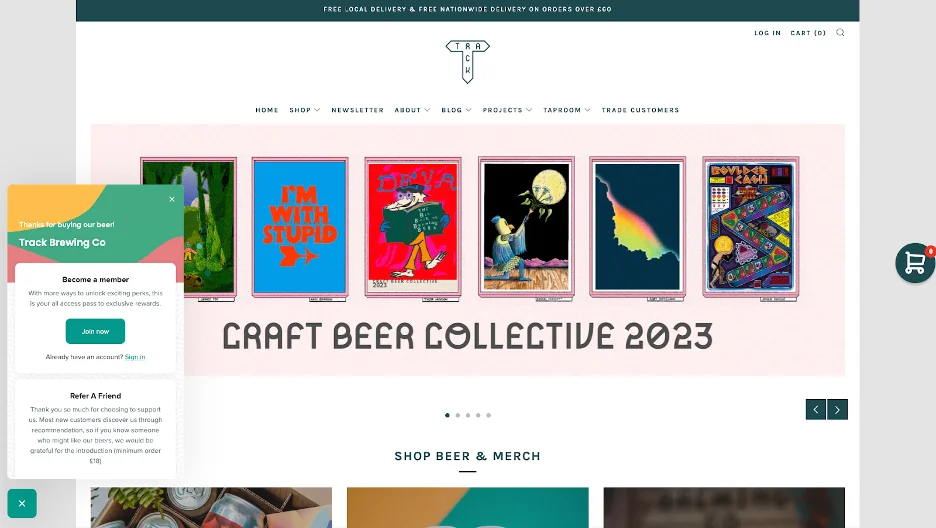
Track Brewing Co.’s approach to gamification is a testament to simplicity and effectiveness. The brewery’s reward scheme, accessible via a button on its website, provides users with tangible benefits. By earning ‘Track Tokens’ for every pound spent and utilizing a visible progress bar for free shipping, the brand adds transparency to the gamified process. The emphasis on referrals and clear incentives establishes a straightforward yet engaging loyalty program, demonstrating that gamification only sometimes requires elaborate strategies to be effective.
8. Harvey Nichols
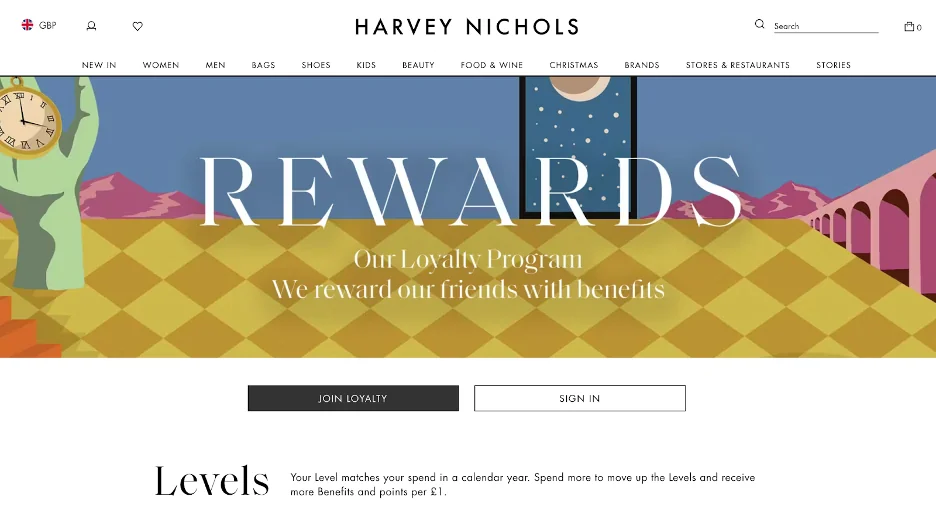
Harvey Nichols adopts a no-frills, no-fuss approach to its reward scheme, focusing on providing straightforward benefits. The tiered system, where customers move up levels based on spending, adds a sense of achievement and progression. The benefits associated with higher levels, ranging from champagne lunches to free drinks and vouchers, incentivize customers to continue their engagement. The simplicity of the reward scheme aligns with the brand’s image, offering customers a clear path to enhanced perks based on their loyalty.
9. Casper
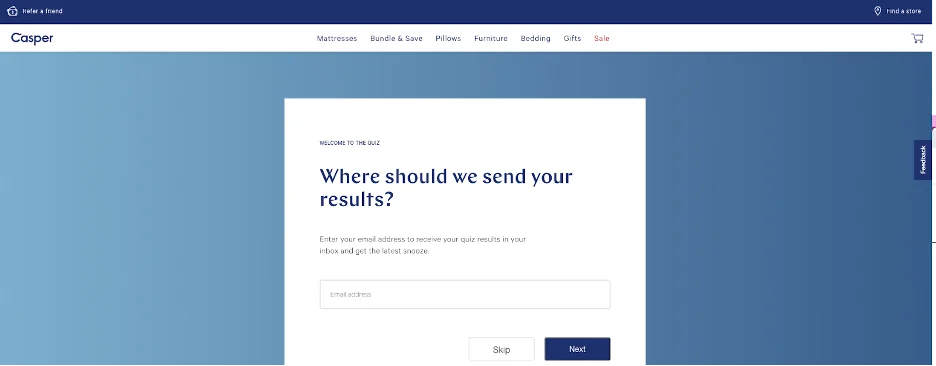
Casper’s approach to gamification takes the form of an interactive and personalized mattress quiz. Choosing a mattress becomes an engaging experience as users answer quiz questions directly influencing the product recommendation. This interactive decision-making process adds an element of fun and customization, making the shopping journey more enjoyable. Casper’s strategy aligns with the idea that gamification doesn’t always have to involve intricate games; sometimes, integrating playfulness into the decision-making process can be equally effective.
10. Gucci
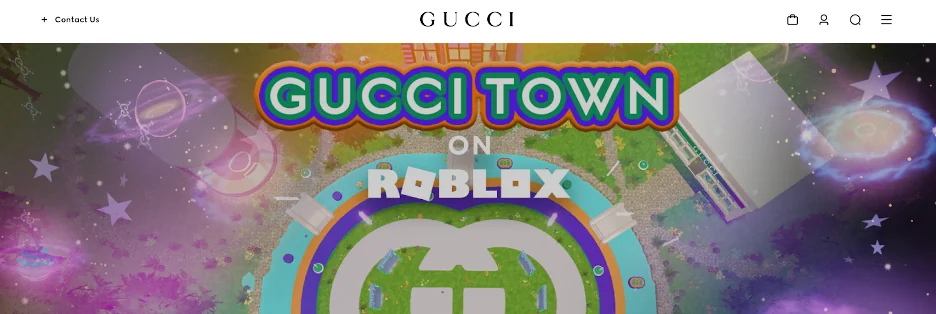
Gucci Town exemplifies how luxury brands can leverage the metaverse to create an immersive and engaging customer experience. Incorporating mini-games and challenges adds a playful dimension, allowing users to explore Gucci’s heritage and product range in a gamified manner. The virtual currency and the ability to earn rewards through mini-games create an interactive ecosystem. Gucci Town serves as a platform for showcasing products and fosters a sense of community among users. This approach showcases the versatility of gamification, even within the exclusive realm of luxury brands.
Gamification in Ecommerce Platforms: Pioneering a New Era:
A. Shopify
At the forefront of eCommerce platforms, Shopify stands out for its ability to seamlessly incorporate gamified elements into online stores. The platform’s flexible infrastructure facilitates the effortless integration of gamification features, ranging from dynamic loyalty programs to engaging ‘spin-to-win’ functionalities. Leveraging Shopify’s capabilities amplifies customer engagement and nurtures long-term customer loyalty.
Key Shopify apps and integrations designed for gamification include:
- Wheelio: Introduces captivating spin-to-win pop-ups, showcasing an exciting example of gamification.
- Gambeball: Facilitates the implementation of loyalty and rewards programs.
- ClawCrane: Empowers online retailers with gamified pop-ups and enticing discounts.
- Smile: Enables the establishment of referral programs and VIP rewards initiatives.
B. BigCommerce
Mirroring Shopify’s capabilities, BigCommerce provides out-of-the-box functionality for infusing gamification into the customer journey, enticing customers to return for more. Through an extensive library of third-party apps and integrations, online retailers can craft memorable shopping experiences. The platform allows the seamless setup of customizable loyalty and rewards programs, offering incentives such as discounts and free shipping to encourage repeat business.
Key features for BigCommerce users include:
- Smile.io: Establishes comprehensive loyalty programs and reward schemes.
- Fyrebox: Facilitates the creation of quizzes for personalized product recommendations.
- Gratisfaction: Enables online retailers to conduct giveaways and sweepstakes and reward users for specific actions.
Online retailers using BigCommerce can discover many additional gamification features through the platform’s official app store.
C. WooCommerce
WooCommerce empowers site owners to incorporate gamification into the customer experience seamlessly. Online retailers can transform digital rewards into tangible customer incentives by integrating extensions such as GamiPress and Gamification for WooCommerce. These extensions are configurable to grant customers badges for specific actions, fostering a sense of accomplishment and community.
Key features for WooCommerce users include:
- GamiPress and Gamification for WooCommerce: Provide a platform for digital rewards and badges tied to specific customer actions.
Additional Gamification Platforms for eCommerce and Retail
Beyond the platforms mentioned above, several dedicated tools cater specifically to the unique needs of eCommerce and retail:
- Omnisend: Offers the capability to design and automate gamification marketing strategies, effectively driving sales.
- Bunchball Nitro: Combines the power of gamification with data analytics to enhance customer engagement.
- Influitive: Creates a gamified shopping experience while fostering a dedicated community of loyal shoppers.
- LoyaltyLion: Tailored software designed to reward customer loyalty and improve customer retention.
- Gleam: A comprehensive suite of apps allowing users to orchestrate gamified contests and giveaways, contributing to eCommerce growth.
- Storyly: Curates personalized buyer experiences through engaging quizzes and trivia.
- Peek & Poke: Drives eCommerce marketing strategies by implementing customized games.
Optimizing E-commerce Gamification Strategies: A Comprehensive Guide
Delving into the realm of gamification in e-commerce opens up myriad possibilities to enhance customer engagement and interaction. While creativity plays a pivotal role in crafting a tailored gamification strategy for each e-commerce business, there are some general tips and ideas to illuminate the journey. Let’s explore a few effective strategies that can elevate your e-commerce gamification efforts.
1. Gamify Your E-commerce Social Responsibility
Integrating social responsibility into your gamification strategy can create a meaningful connection with your audience. Large companies like Nike, Starbucks, BodyShop, and Microsoft have successfully aligned social responsibility initiatives with their business models. Regardless of your business size, incorporating social responsibility into your customer loyalty program through gamification, such as matching gift programs or volunteer grant funding, can foster a sense of community and purpose.
2. Let Them Spin the Wheel with a Cool Popup Campaign
Implementing a “spin the wheel” strategy in your popup campaigns can inject an element of gamification, enticing users and yielding increased sales and conversions. Though not a new concept, prize wheels have proven to be entertaining and versatile for various e-commerce campaigns. Popups, when designed with user interest in mind, can be a powerful tool. Consider using a user-friendly popup builder to create a captivating spin-to-win campaign, collecting valuable user data in the process.
3. Organize a Trivia Quiz with a Point System
Capitalizing on people’s love for games and challenges, incorporating a trivia quiz with a point system into your gamification strategy can be both engaging and rewarding. Create fun crosswords or personality quizzes related to your products, offering participants personalized discount codes based on their responses. Designing a points system that users can redeem over time not only boosts brand awareness but also associates your product with enjoyable experiences, fostering customer loyalty and advocacy.
Conclusion:
Although not a new concept, gamification has gained popularity in the evolving e-commerce landscape. It provides online businesses with a unique opportunity to connect with users in a closer, more entertaining manner. The key is to offer an interactive experience tailored to each customer. It doesn’t have to be expensive – even a simple spin-to-win popup campaign can make a significant impact. While the benefits are evident, starting modestly, researching various e-commerce websites, and tailoring a gamification plan that aligns with your brand identity and customer base is crucial.
Remember, gamification is a dynamic strategy with both benefits and drawbacks. Experiment with small steps and refine your approach based on user responses. In the ever-evolving world of e-commerce, embracing gamification can be a game-changer for your business.
Frequently Asked Questions on Ecommerce Gamification:
What is the Best E-commerce Gamification Solution?
Various tools are available, ranging from simple popup builders like Popupsmart to dedicated gaming platforms like Gamify. The key is to choose a tool that allows the application of game mechanics to non-game contexts.
What are the Gamification Benefits for E-commerce?
Gamification in e-commerce enhances user engagement, increases average time on page, generates buzz for new products, and aids in promotional campaigns.
How is Gamification Used in Education Programs?
Gamification in education includes storytelling, funny illustrations, daily challenges with prizes, progress indicators (points, badges, leaderboards), and fostering social connections and teamwork.



